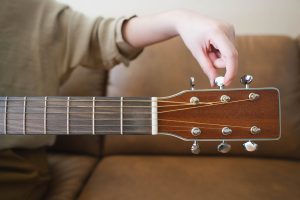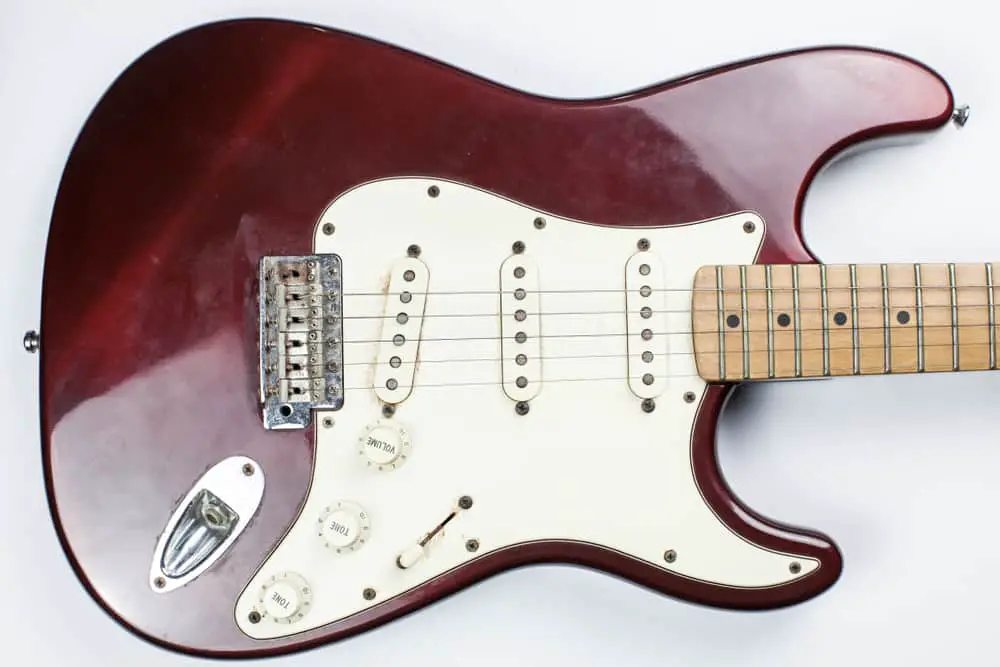
The beauty of electric guitars is that they mostly have variations in their designs. While some are aesthetic-oriented, others play a major role in the guitar’s tonal character. One of the electric guitar parts that usually alternates between designs is pickups.
If you’ve seen many electric guitars, you must have noticed that some have slanted or angled pickups close to the bridge. Have you ever wondered why? Are the pickups broken? Is it all aesthetics? Why are they not straight?
Why are some guitar pickups angled?
Most angle guitar pickups are usually single and close to the bridge. Guitars have these slanted pickups to improve the tone of the guitar. They do this by enhancing the high strings’ treble strength and the lower strings’ bass frequencies. This gives the high strings a brighter sound and the low strings a warmer sound.
But trust us, there’s more to angled pickups than the above summary. Here we’ll look into the world of slanted pickups and everything you need to know about them.
Pickup Positions – How It Affects the Guitar’s Sound
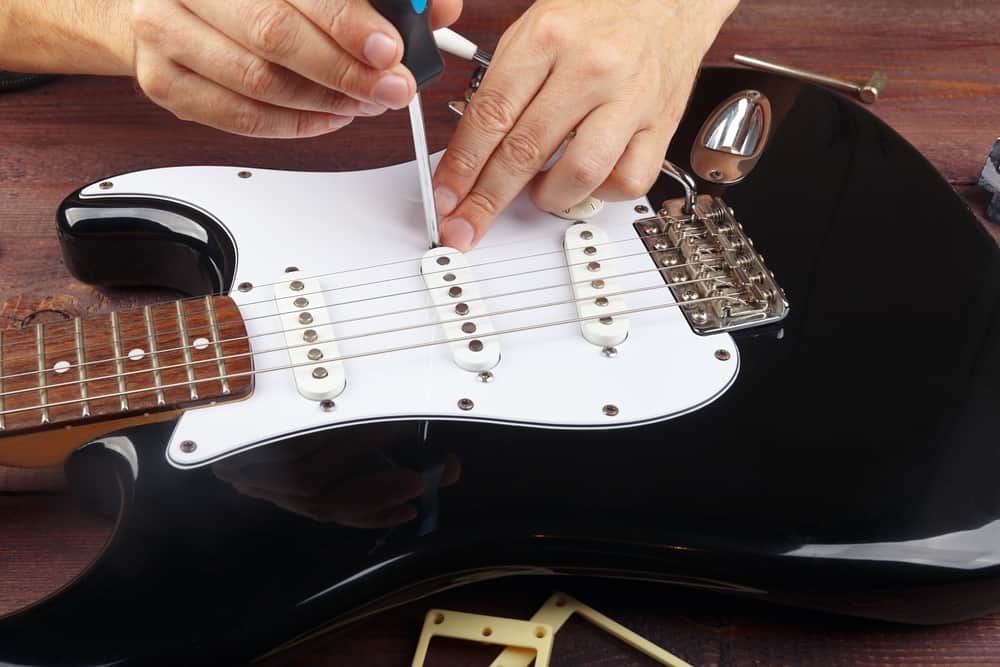
You probably won’t understand the relevance of angled guitars if you don’t understand how pickup positions relate to a guitar’s tone.
The three common pickup locations on an electric guitar are the bridge, middle, and neck pickups. The pickups can be of the same model, but their location will give each a different sound. Have you ever wondered why?
Well, it’s simple and logical. The closer a pickup is to the neck, the rounder and warmer it sounds. Also, the closer a pickup is to the saddle or bridge, the thinner and brighter it sounds.
That is the basic logic governing electric guitar pickups, and that’s why you notice that pickups positioned further to the neck tend to have a warm tone. Pickups in the middle usually have a feel of both warmness and brightness.
How Do Angled Pickups Work?
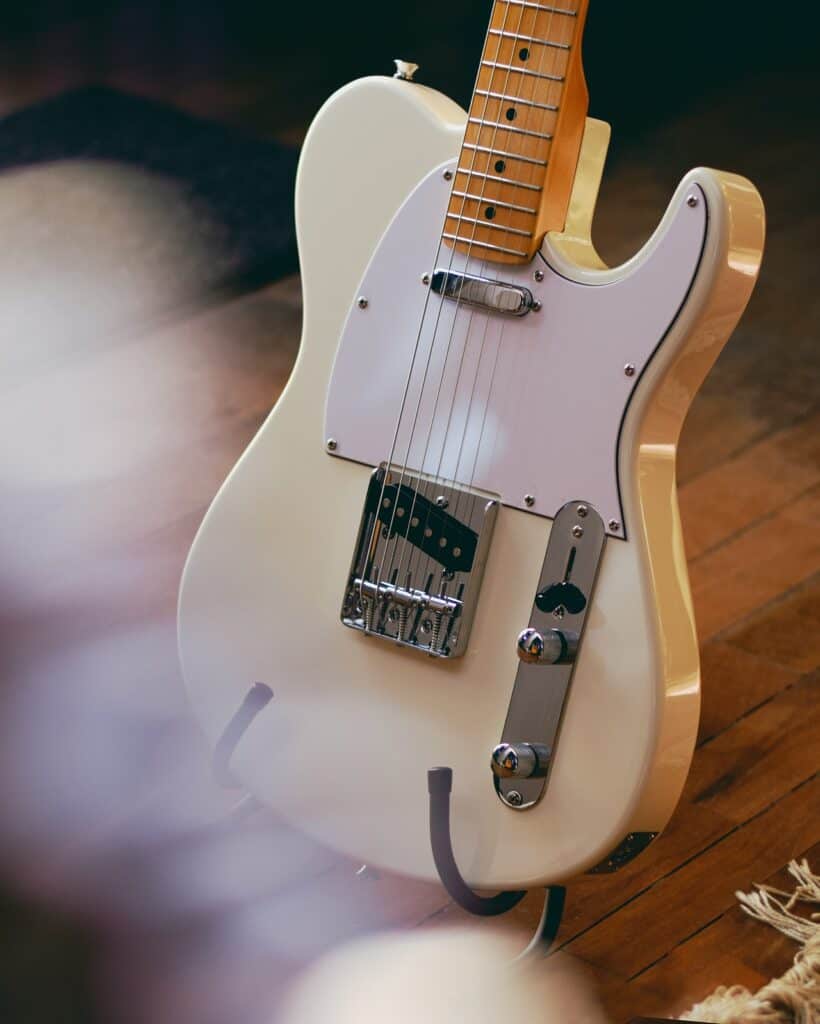
Now that you’ve fully understood how the position of a pickup can influence its sound, it’s time to understand the reason behind angled pickups.
In the picture above, you can see that the angle pickup pole for the high strings is close to the guitar’s bridge. That gives the higher strings more treble strength. The result is a brighter and thinner tone.
If you look again, you’ll also see that the angle pickup pole for the lower strings is close to the guitar’s neck. Giving the low strings more bass frequencies. The result is a rounder and warmer tone.
So basically, the angle pickup’s job is to increase the brightness of the higher guitar string’s tone while simultaneously increasing the warmness and roundness of the lower string’s sound.
Are Angled Pickups Reserved For Only Bridge Pickups?

Generally, single-coil pickups close to the bridge tend to have weak bass frequencies. So angled bridge pickups help strengthen these weak frequencies and soften the harsh frequencies common with the bridge position.
Since the neck pickup already has a warm and round tone(bass frequencies), there’s no need for it to be slanted. There’s already a satisfactory low end in the neck pickup’s frequencies, so enhancing it will be unnecessary.
Some popular guitars like the Fender Jag-Stang or the short-scaled Fender Mustang have two slanted strings perpendicular to the guitar’s strings.
Are Angled Pickups Necessary?
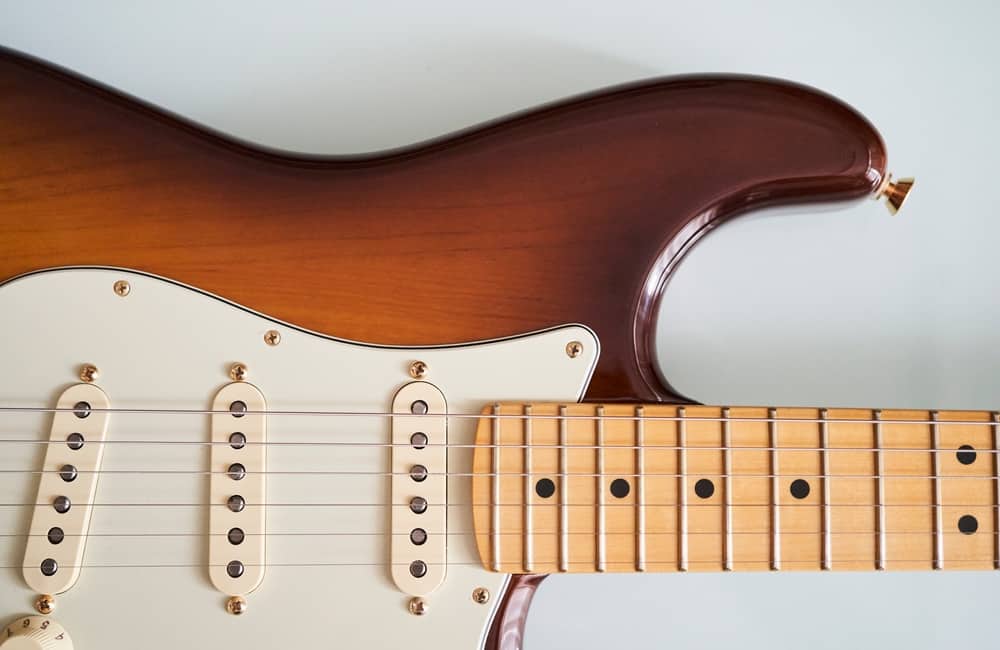
The Stratocaster and Telecaster are two guitars known for their slanted pickups. Fender use angled pickups to enhance the treble on the higher guitar strings and the bass on the low strings.
Newer guitar models are now using this technique but are slanted pickups really important? Can an electric guitar do without it?
Well, not all electric guitars have slanted angles. One of the major reasons the Telecaster and Stratocaster use angled pickups is history. Leo Fender started the tradition of slanted guitars, and since then, the brand has maintained it.
Many professional players believe it doesn’t make a difference; some have even refused to play guitars with slanted pickups. In the end, the guitar manufacturer and guitarist have the final say.
Also, there are some straight pickups where the lower strings sound warmer and rounder than that of slanted pickups. So angles are not a guarantee for a bassy lower string.
The Fender Telecaster (formerly broadcaster) was the first to have slanted pickups.
The Bottom Line
Angled pickups are further proof that the slightest change can make a difference in guitars.
A slanted pickup’s function is to enhance the treble strength of the guitar’s high strings and increase the lower string’s bass frequencies. Giving the high strings a brighter tone and the lower strings a warmer tone.
That does not mean an electric guitar pickup must be slanted before it becomes more bassy in the lower strings. Some straight pickups do this too.
Frequently Asked Questions
Yes, they allow for more treble strength in the higher strings and more bass frequency in the lower strings.
This is not entirely good and can lead to the pickup’s magnetic field interfering with your string’s vibrations.









